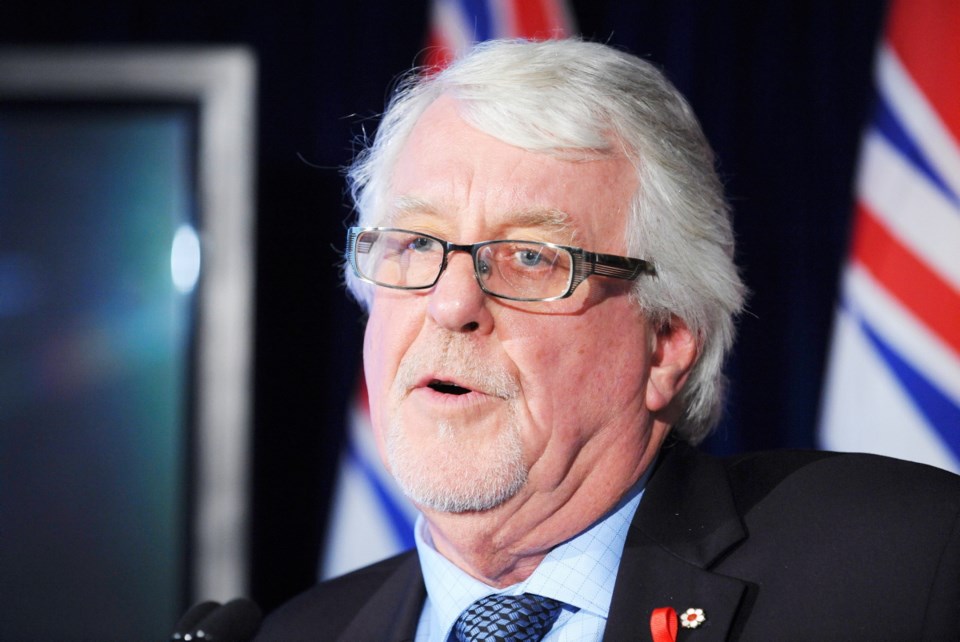The Northern Health Authority will be helping school districts test the drinking water in four other northwest communities following the discovery of elevated lead levels at schools in Prince Rupert, the Health Ministry said on Wednesday.
The ministry did not identify the communities, but said in a statement that they were selected because they have “chemistry conditions that could support leaching of lead in schools.”
The health authority has contacted all school districts and municipalities to ask for their water-quality measurements. The authority is recommending that those without recent results get their water tested.
In addition, Dr. Perry Kendall, provincial health officer, has written to the Ministry of Education to remind school districts of their “long-standing responsibility” to test the water in their schools.
Kendall said most school districts have dealt with the issue appropriately, “but recent events have indicated inconsistency in application of testing and mitigation measures in some areas.”
He asked the ministry to instruct all school districts to review their policies and practices and contact the local health authority if they have questions.
The ministry forwarded the reminder to superintendents and secretary-treasurers Wednesday.
The discovery of lead in the water at Prince Rupert schools follows a 2012 incident in Kitimat in which the death of salmon eggs in a school aquarium triggered an investigation that uncovered high lead levels in four schools. The Northern Health Authority then waited four years before testing the water in nearby Prince Rupert schools and, again, finding four with elevated lead levels.
The Health Ministry said Wednesday that chemical testing was also done in the 1990s at two Terrace schools. “One showed elevated lead levels and Northern Health made flushing recommendations to the school to reduce lead content,” the statement said.
Prince Rupert schools are now flushing water lines each morning and installing fountain filtration systems to remove lead.
The issue is believed to stem from water sitting stagnant in contact with lead pipes or lead solder in buildings that were built before 1989, when changes to the B.C. plumbing code restricted the use of lead materials.
Kendall states in his letter that many coastal communities have “soft” and acidic water that may promote “lead corrosion.”
“Property owners are responsible for ensuring that the plumbing does not create a drinking water health hazard for those who consume the water,” he writes.
Kendall notes that lead can be hazardous to human health, even at very small amounts, and young children absorb lead more easily than adults so are more susceptible to its harmful effects. “While we have no evidence of children being adversely affected in B.C., it is nonetheless important to reduce population lead exposure.”
Health Minister Terry Lake said it appears some districts in the north forgot their responsibility to test drinking water in schools.
“I think what’s happening is there’s a loss of corporate knowledge with time, because a lot of school districts did deal with this after the changes were made to the [plumbing] code in 1989,” he said. “Buildings that were of concern in many school districts were, in fact, investigated, problems were resolved or mitigated and, I think, probably people said: ‘Okay, we’ve done that, so we don’t need to worry about it.’
“I think with turnover with staff and turnover with medical health officers, it’s something that kind of got lost along the way.”
Jennifer Rice, who represents Prince Rupert and the North Coast for the NDP, said that was hardly reassuring for parents across the province wondering whether their children’s drinking water is safe.
She said Lake’s response highlights the need for B.C. to follow Ontario, where schools and day nurseries are required by law to test drinking water for lead and flush plumbing regularly.
“If there was legislation . . . that mandated schools to monitor for lead and to report for lead then we would know what the state is of our schools across the province,” she said. “If there were problems, it would be looked after.”
But Kendall said in an interview it’s as easy to forget a regulation as it is a policy. “What you actually need in place is a policy that people are actually aware of,” he said.
He said schools in the northwest likely didn’t have a policy in place to check the water in schools every two years. “The corporate memory sort of ‘loses it’ if you don’t have it actually prescriptively in your policies what to do on a day-to-day basis or a year-to-year basis,” he said.



